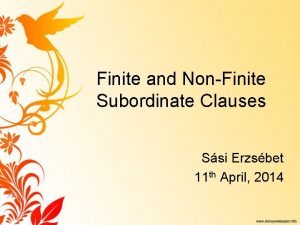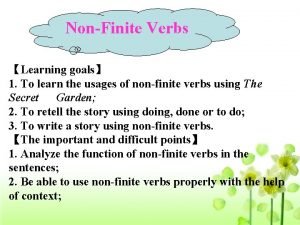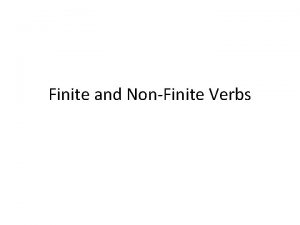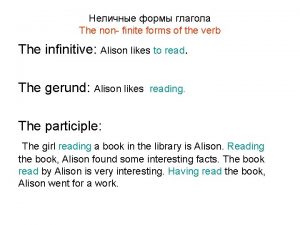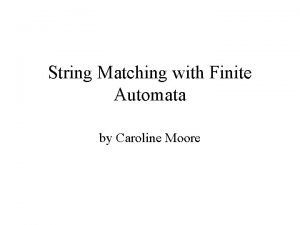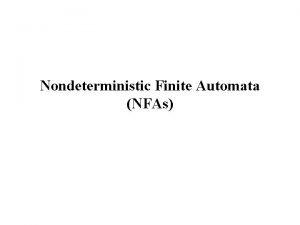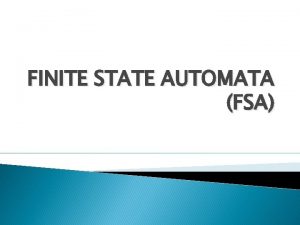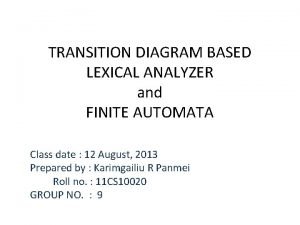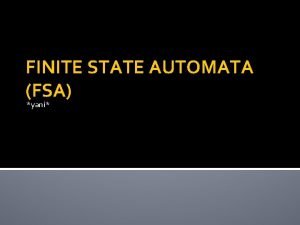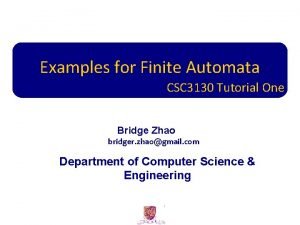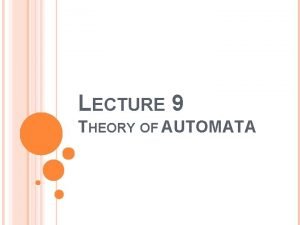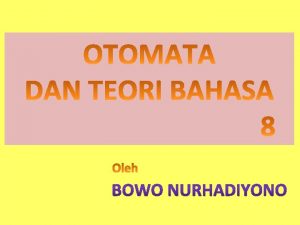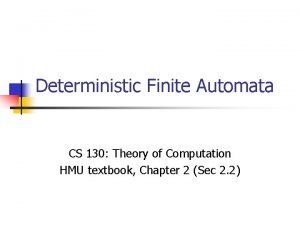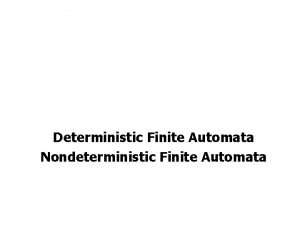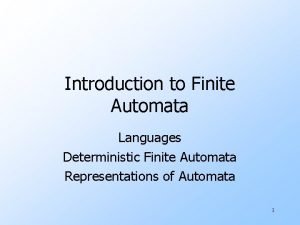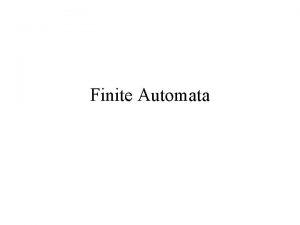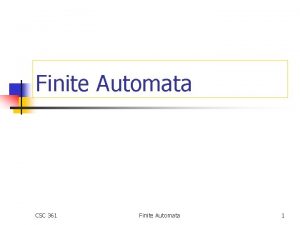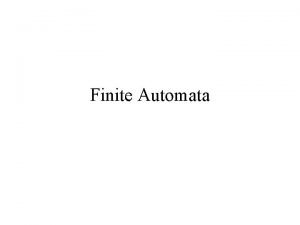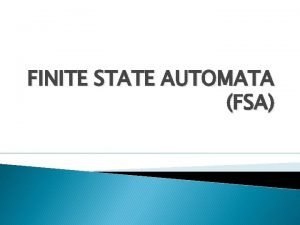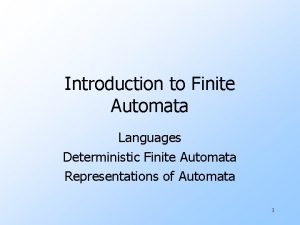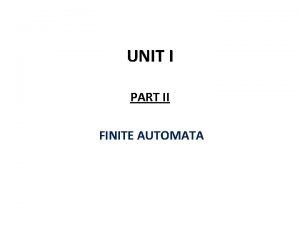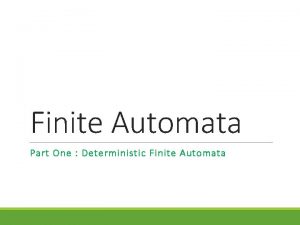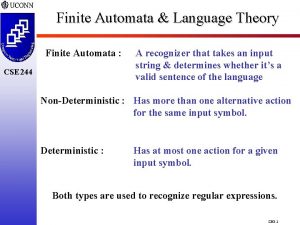Finite Automata Lecture 4 Section 1 1 Wed















- Slides: 15

Finite Automata Lecture 4 Section 1. 1 Wed, Sep 6, 2006

The Automatic Door • The automatic door at the grocery store has two pads: • One in front of the door. • One behind the door. • The door is in one of two possible states: • Open • Closed

The Automatic Door • There are two independent input signals: • A person is or is not standing on the front pad. • A person is or is not standing on the rear pad. • There are four combinations of input signals.

The Automatic Door • In terms of input signals and door states, describe the behavior of the door.

The Automatic Door • Express the behavior as a table. • Express the behavior as a graph.

A Canal Lock • Describe the operation of a canal lock designed so that the gates can never be opened when the water on the two sides is not at the same level.

A Canal Lock • The working parts of the lock are • Upper gate • Upper paddle • Lower gate • Lower paddle

Definition of a Finite Automaton • A finite automaton is a 5 -tuple (Q, , , q 0, F), where • Q is a finite set of states, • is a finite alphabet, • : Q Q is the transition function, • q 0 is the start state, and • F Q is the set of accept states.

Definition of a Finite Automaton • If, at the end of reading the input string, the automaton is in an accept state, then the input is accepted. • Otherwise, it is rejected.

Definition of a Finite Automaton • Describe the automatic door formally. • Describe the canal lock formally. • An accept state is any state that doesn’t cause a disaster.

The Language of a Machine • A given finite automaton accepts a specific set of input strings. • That is called the language of the automaton. • A language is called regular if it is the language of some finite automaton.

Examples • Design a finite automaton that accepts all strings that start with a and end with b. • Design a finite automaton that accepts all strings that contain an even number of a’s.

The Regular Operations • We may define operations on languages: • Union: A B = {x | x A or x B}. • Concatenation: A B = {xy | x A and y B}. • Star: A* = {x 1 x 2…xk | xi A and k 0}.

Closure under Union • Theorem: If A and B are regular languages, then so are • A B • A*

Examples • Let A = {x | x contains an even number of a’s}. • Let B = {x | x contains an even number of b’s}. • Try to design finite automata for • A B • A*
 Finite subordinate clause
Finite subordinate clause What is finite verb
What is finite verb Learning objectives for finite and non finite verbs
Learning objectives for finite and non finite verbs Finite and non-finite verb
Finite and non-finite verb Non finite forms of the verb qayda
Non finite forms of the verb qayda Soal dan jawaban uts teori bahasa dan automata
Soal dan jawaban uts teori bahasa dan automata String matching finite automata
String matching finite automata Finite automation
Finite automation Contoh fsa
Contoh fsa Lexical analysis finite automata
Lexical analysis finite automata Finite state diagram generator
Finite state diagram generator Finite state automata didefinisikan dengan?
Finite state automata didefinisikan dengan? Automata
Automata Kleene theorem part 2 example
Kleene theorem part 2 example Mesin mealy adalah
Mesin mealy adalah Automata calculator
Automata calculator
